Uttar Pradesh
Maha Kumbh Lessons: The Growing Religious Tourism In Eastern UP Needs A Better Connected Circuit
Nishtha Anushree
Apr 17, 2025, 05:29 PM | Updated 05:28 PM IST
Save & read from anywhere!
Bookmark stories for easy access on any device or the Swarajya app.
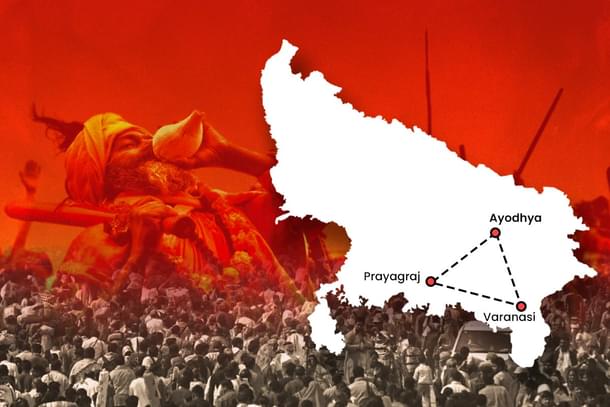
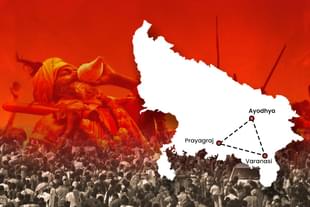
Inordinately long jams, running into tens of kilometres, were seen on the roads leading to Prayagraj in the second week of February. Ironically, this was the time when the crowd to Maha Kumbh 2025 was expected to decrease after a spike during Vasant Panchami (3 February).
While the longest jam was on the road from the Madhya Pradesh border to Prayagraj, severe traffic congestions were seen on roads between Prayagraj, Ayodhya and Varanasi, the three largest centres of religious tourism in Uttar Pradesh (UP), almost for the entire duration of the Kumbh.
This led to route diversions by the administration at various places to facilitate traffic management, and a large volume of vehicles was seen moving even on village roads.
With the support of locals and administration, the people stuck in traffic jams were assisted and their movement facilitated. However, this situation could have been avoided with some advance planning for the triangle of Ayodhya-Varanasi-Prayagraj.
A tour operator told Swarajya, "Since stay expenses were too high and even a stay was difficult in Prayagraj, many pilgrims chose accommodation in Varanasi, or Ayodhya." This created a triangular religious circuit, with pilgrims traveling between Varanasi, Prayagraj, and Ayodhya.
A local from Ayodhya said: "On the first day after Mauni Amavasya, nearly 18,000 vehicles entered Ayodhya— the numbers only increased in the coming days."
"We are always ready to welcome visitors, but proper preparations were needed. The state should see that it is not just Prayagraj, but an overall religious circuit which needs attention," he added.
While the Yogi Adityanath government prepared for the crowd of Maha Kumbh, it appeared less prepared for the crowd diverging towards Ayodhya and Varanasi, as was even apparent from the appeal made by the Ram Janmabhoomi temple trust to locals to postpone their temple visit plans.
It has been just over a year since the Ram Janmabhoomi Mandir started witnessing the influx of devotees and the infrastructure development in Ayodhya began only five years ago, after the Supreme Court verdict in favour of the Ram Mandir.
Similarly, it has been only three years since the inauguration of the Kashi Vishwanath corridor in Varanasi, and the devotees' annual footfall has surged to almost 20 times since then.
Thus, it was not entirely unexpected that both cities be unprepared for crowds of this scale.
Moreover, even the Kumbh Mela itself—which was organised in the largest area ever spanning 4,000 hectares—expected an influx of 45 crore devotees, but eventually reported a footfall of 66 crore at the end of the 45-day festival, surpassing the estimate by 21 crore.
Similar footfall surges were seen in Ayodhya and Varanasi. On average, 3 lakh pilgrims visit Kashi Vishwanath daily, but this number averaged at 5 lakh daily during the Maha Kumbh period, peaking on Maha Shivratri, with a footfall of 11.69 lakh.
Similarly, in Ayodhya, on average, 5 lakh devotees visit the Ram Mandir daily since its inauguration on 22 January 2024. This number is estimated to be 10 to 12 lakh, over double the daily footfall, during the Kumbh Mela period.
To accommodate this crowd, the temple, which used to remain open from 7 am to 9 pm, extended its darshan timings to 5 am to 11 pm. While these measures aided in crowd management within the temple premises, the same could not be ensured for the city and its outer areas, which still remain underdeveloped.
"One of the reasons for some mismanagement was inadequate infrastructure development. How can we expect that crores of people could be managed with the same narrow roads," an Ayodhya resident, Shivam Sharma, told Swarajya.
Undoubtedly, Ayodhya has seen unprecedented development in the past few years. With the inauguration of an airport, the redevelopment of the railway station for capacity expansion and the expansion of the intra-city road network, the city has become capable of handling lakhs of tourists per day.
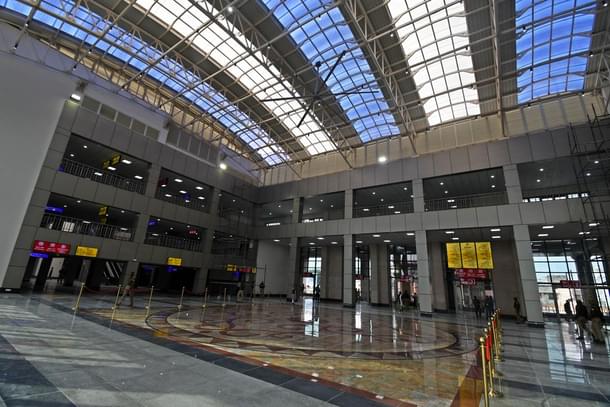
"Road construction has been done at a fast pace and only some quality issues have been there. Ram Path was constructed and 14 Kosi Marg was built. Ongoing construction works are also happening at a fast pace," another Ayodhya resident, Brijendra Kumar, told Swarajya.
Inter-city road network
While the intra-city travel has drastically improved, the inter-city travel between major religious tourist centres is still an issue. Partial success has been achieved through Varanasi ring road and the work on Ayodhya ring road has begun.
"While the Ayodhya to Rae Bareli four-lane has been recently constructed, Ayodhya to Prayagraj is still a two-lane road. It's not even four-lane. So a new greenfield expressway is being made to connect Prayagraj and Ayodhya ring road. It will also pass through the airport," Brijendra Kumar said.
Notably, a six-lane, access-controlled greenfield expressway was approved at a cost of Rs 5,000 crore to connect Ayodhya and Prayagraj. Currently, a 164-km road connects the two cities. Only some portions of this road are four-lane, while most are two-lane.
An alternative longer route to connect Ayodhya and Prayagraj is via Rae Bareli. Although it is a four-lane road, it takes four and a half hours on this road to travel 240 km. The new expressway is expected to bring down the travel time to two and a half hours.
Currently, land acquisition process for the highway is ongoing and the timeline for project completion will be revealed only after its completion. National Highways Authority of India (NHAI) is the nodal agency for the expressway.
"Without this expressway, our travel agency's vehicles were trapped in road jams for eight to 10 hours. The biggest chokepoint was the place where the Purvanchal expressway merges with the Ayodhya-Prayagraj road in Sultanpur. There were jams of three to four hours," a partner in Ayodhya Dham tours and travels agency told Swarajya.
The connectivity to Varanasi from Ayodhya will also become better if this expressway connects with the Purvanchal expressway. For the time being, the four-lane road between Ayodhya and Azamgarh is ready to improve connectivity to Varanasi.
Meanwhile, NHAI is working on a four-lane road between Jaunpur and Prayagraj, which will improve connectivity between Varanasi and Prayagraj. Rs 4,045 crore project has been approved for this route and Detailed Project Report (DPR) is being prepared.
"Highways need to be better. For instance, Lucknow-Ayodhya highways needs to be smoothened. Ayodhya-Varanasi highway has improved," Shivam Sharma told Swarajya. Currently, it takes 2 hours 40 minutes to cover a distance of 136 km between Ayodhya and Lucknow.
Intra-city road network
The residents of Prayagraj couldn't lead a normal life during the Maha Kumbh period due to various restrictions and traffic diversions. Similar is the story of Ayodhya residents. Residents complain about the inconvenience caused to locals due to the massive influx of pilgrims.
"It was like a curfew for two months as we couldn't take out our vehicles, had to take longer routes, no street vendors were available. There should have been some passes for locals to ease their movement," Sharma suggests.
"School-going children were affected, we were facing troubles in going to the office. Route diversions were not properly planned," a Prayagraj resident, Rakesh Shukla, told Swarajya. However, he acknowledged the efforts made to decongest the city roads and ensure proper street lighting in Prayagraj as part of the Kumbh preparations.
The inconvenience caused to locals could have been avoided or at least minimised, with alternative routes designated for them. This could have been achieved with alternatives like ring roads and bypasses, directly connecting to the pilgrimage site, instead of passing through the city roads.
One of the reasons why Varanasi residents did not experience the same inconvenience as Ayodhya-vasis is the availability of ring road. The first phase of the ring road was inaugurated in 2018 by Prime Minister Narendra Modi and phase 2 has been opened in multiple stages to ease the traffic movement.
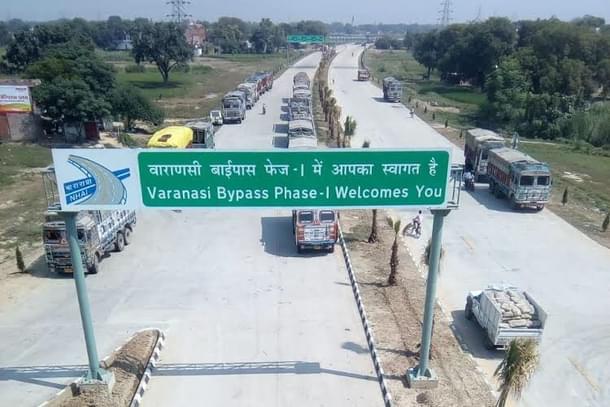
Currently, phase 3 of the ring road project is being constructed. "It will connect Varanasi to Chandauli and further to Bihar and Nepal. After it gets operationalised, traffic in Varanasi will be drastically reduced," a Chandauli resident Shivam Singh told Swarajya.
Similarly, Ayodhya ring road is being constructed at a cost of Rs 3,935 crore. It will improve connectivity with Lucknow, Varanasi, Prayagraj, and Raebareli. "After it's constructed, traffic will be managed well. However, my concern is with the pace of development, which appears slow," Ayodhya resident Chandrashekhar Pathak told Swarajya.
In Prayagraj also, an inner ring road is being constructed. While the 15-km-long phase is almost ready, the land acquisition for the 16.4-km-long next phase is ongoing. "The work began before Kumbh, but it would have been better if it would have completed by then," Rakesh Shukla added.
While the ring roads ease traffic moving in and out of the city, the city roads also need to be widened to accommodate more traffic within the city. The road widening works in various UP cities have been ongoing for a long time.
Even on 11 April, PM Modi initiated work on three new flyovers and multiple road-widening projects in his constituency Varanasi. Similar road widening works are going on at a fast pace in Ayodhya, as confirmed by a local, Durgesh.
However, if these projects had been completed beforehand, they would have aided in better management of Kumbh traffic. When asked what could be improved before the next Kumbh, Chandrashekhar Pathak said, "The completion of ongoing projects is enough for the future management."
Other connectivity
"Bus, rail and taxi connectivity, all three are needed for a religious tourism circuit. Taxi drivers demand insane amounts, which should be restricted by talking to their association. The number of buses and trains should be increased," Shivam Sharma said.
The UP government is already planning to roll out a fleet of 50 electric buses for inter-city operations between Lucknow, Ayodhya, Prayagraj, Kanpur, Rae Bareli and Varanasi. Similar is the case with rail operations.
"The government is working on a strategy to interconnect Ayodhya, Varanasi, Prayagraj, Chitrakoot and Vrindavan. Hence, trains are also being run on the same routes. Development works also align with this vision," Sharma added.
A ring rail on the route between Ayodhya-Prayagraj-Varanasi is also set to be run after the successful trial run during the Maha Kumbh. The proposal has been sent to the Railway Board.
During the Kumbh, 560 trains were being operated on four different routes under the ring rail connecting Prayagraj. The routes were Prayagraj-Ayodhya-Varanasi-Prayagraj, Prayagraj-Sangam Prayag-Jaunpur-Prayag-Prayagraj, Govindpuri-Prayagraj-Chitrakoot-Govindpuri and Jhansi-Govindpuri-Prayagraj-Manikpur-Chitrakoot-Jhansi routes.
The rail traffic handling capacity of Prayagraj was increased with 48 platforms across nine railway stations. Prayagraj, Phaphamau, Rambag, and Jhunsi yards were remodelled to allow more trains to operate from Prayagraj.
Ayodhya Dham Junction, Prayag Junction, Prayagraj Junction, Varanasi Cantt and Varanasi City railway stations are already being redeveloped under the Amrit Bharat Station Scheme.
New tracks are being laid across these routes. The third and fourth tracks will be laid between Varanasi and Deen Dayal Upadhyay Junction. The double-tracking work between Prayagraj and Varanasi has been completed, allowing trains to operate at a speed of 130 km per hour (kmph).
A positive development is that all three religious tourism centres have an operational airport. As per reports, the Prayagraj Airport saw a massive rise in operations during Kumbh, handling over 100 flights daily.
Ayodhya airport currently handles 174 flights per week with its current capacity of handling 16 lakh passengers annually, which is set to be increased to 60 lakh with an investment of Rs 1,625 crore.
Similar expansion plans have been approved for the Varanasi airport, which currently has capacity to handle 39 lakh passengers annually. With an expenditure of Rs 2,870 crore, it is expected to be able to handle 1 crore passengers annually in the time to come.
The next centres
While developmental work is already being undertaken to connect the three major religious tourism centres in Uttar Pradesh, there are other places too, witnessing a recent surge in footfalls, which might need the government's attention.
Although the UP government approved a budget of Rs 100 crore for Naimisharanya in Sitapur district and Rs 50 crore for Chitrakoot in the Budget 2025-26, their connectivity with other religious tourism hubs is still not up to the mark.
While Chitrakoot has got a connectivity boost with the western UP through the Bundelkhand expressway, its connectivity with Lucknow, Varanasi, Ayodhya and Prayagraj remains poor. This can be easily understood by comparing the travel time.
While it takes less than 6 hours to cover 456 km between Agra and Chitrakoot due to the Bundelkhand expressway, a similar time is taken to cover just a distance of 270 km between Ayodhya and Chitrakoot, giving an average speed of just 45 kmph.
A similar average speed is witnessed on the Lucknow-Chitrakoot and Varanasi-Chitrakoot routes. The situation is worse in the Prayagraj-Chitrakoot, where it takes over 3 hours to cover a distance of just 120 km, which explains why long jams were seen on this route during the Kumbh.
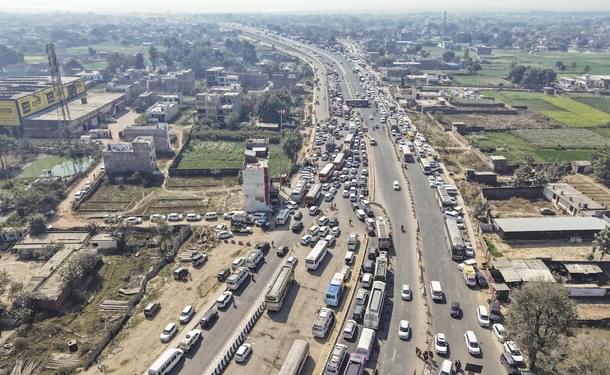
The connectivity problem could be solved by the proposed Ram Van Gaman Path, which would link Chitrakoot to Ayodhya through a 210-km-long six-lane highway. However, no expected timeline for its completion is publicly available.
In Naimisharanya, another important pilgrimage centre finding multiple mentions in sacred Hindu texts, the UP government is set to spend Rs 100 crore for the establishment of Ved Vigyan Kendra, but again, the connectivity from here to Lucknow and Ayodhya, closest centres from it, is such that one can attain average speed of only 45 kmph.
Mirzapur is another emerging religious tourism centre, witnessing a footfall of nearly 1.5 crore during the Kumbh. The UP government has allocated Rs 100 crore for land acquisition for the development of Parikrama Path and another Rs 100 crore for construction works at the Maa Vindhyavasini Temple, Maa Ashtabhuja Temple and Maa Kali Khoh temple.
While Mirzapur's connectivity to its nearest centre, Varanasi, is quite good, again, its connectivity with other centres like Ayodhya, Prayagraj and Lucknow is poor. Various road widening works are ongoing, while the two-lane Prayagraj-Mirzapur highway is set to be converted into a six-lane.
Sarnath is another major tourist attraction near Varanasi. With the completion of phase 3 of the Varanasi ring road, the traffic would be better channelised for Sarnath, without overcrowding Varanasi streets. An elevated corridor to connect Sarnath to the Varanasi ring road has been approved.
With these spots of religious tourism, Gorakhpur, with its famous Gorakhnath Math is also emerging as a hub. With an operational airport and Gorakhpur Link expressway connecting with the Purvanchal expressway, it is smoothly moving ahead on the connectivity map.
Other initiatives
In January, the UP government announced, "On the recommendation of NITI Aayog, the Yogi government is set to develop a new religious circuit spanning over 22,000 square kilometres." This plan includes seven districts of eastern UP: Prayagraj, Varanasi, Chandauli, Ghazipur, Jaunpur, Mirzapur, and Bhadohi.
Then, in February, another initiative with the name 'Bouquet of Project' was announced for 13 cities Lucknow, Kanpur, Gorakhpur, Moradabad, Saharanpur, Jhansi, Mathura, Bareilly, Meerut, Agra, Chitrakoot, Varanasi, and Prayagraj.
Most of these cities are hubs of religious tourism. The government claims it is working on a two-pronged strategy in these cities: providing better amenities to the incoming tourists and improving quality of life of their residents through infrastructure development.
The approved projects under this initiative will be divided into three categories: short-term, medium-term and long-term and the funds will be made available accordingly, without burdening municipalities.
In March, another initiative was announced to build a Buddhist circuit connecting six cities: Sarnath, Kushinagar, Shravasti, Kapilvastu, Kaushambi and Sankisa at a cost of Rs 4,200 crore.
In the first phase, Rs 2,220 crore will be spent on Sarnath, Kushinagar, Shravasti and Kapilvastu for tourism development projects, followed by development works in Kaushambi and Sansika.
While the above initiatives signal that the UP government is serious about developing religious circuits, the focus still appears to be on specific developments within the cities, instead of inter-connectivity.
An Ayodhya resident, Chandrashekhar Pathak, suggested this as he said, "The development within the city limits is going on at a fast pace, while in the outer areas of the city, it is slow. The work on the Ayodhya ring road has not started yet."
This can also be understood from the pace of development on the Ram Van Gaman Path, which was proposed by the Union Ministry of Road Transport and Highways in 2021. Its initial survey was completed last year but there has been no update since then.
If the current developments are considered, the government seems to be underestimating the importance of inter-connectivity — without it, expecting any meaningful spillover from pilgrim traffic in Ayodhya, Varanasi, and Prayagraj to other cities is wishful thinking at best.
The Maha Kumbh contributed approximately Rs 3 lakh crore to UP's economy. Even before the Kumbh, Uttar Pradesh had already scored a hat-trick as the top destination for domestic travellers. One can only imagine what more it could achieve with improved interconnectivity.
Nishtha Anushree is Senior Sub-editor at Swarajya. She tweets at @nishthaanushree.





